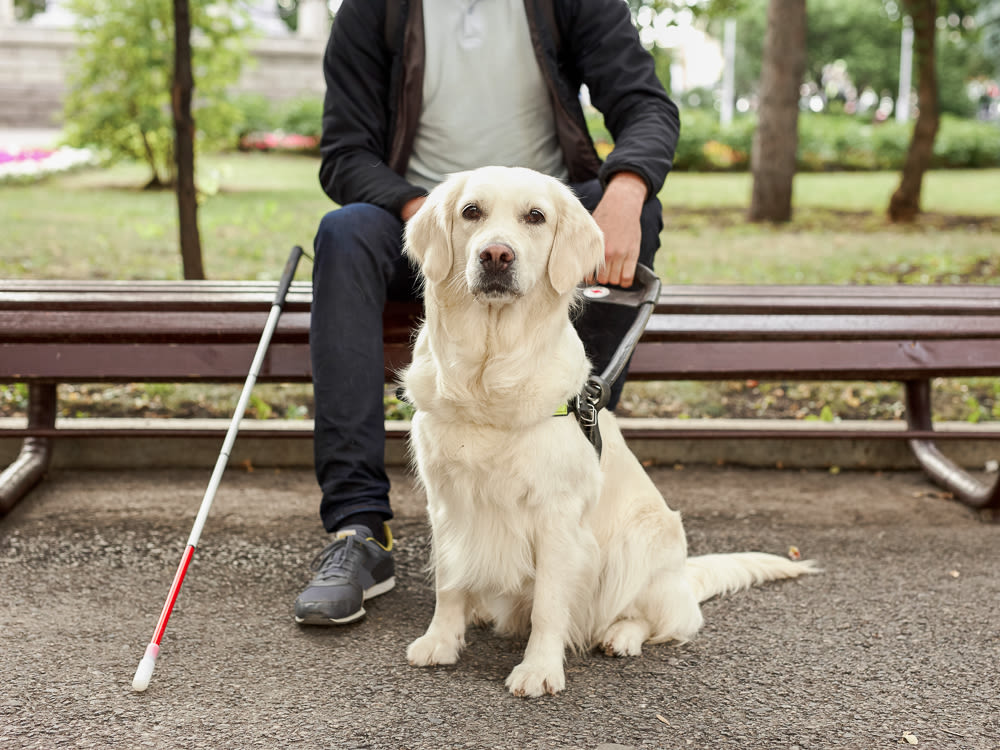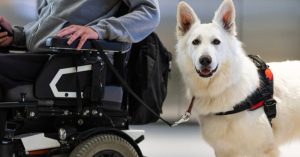What is a Service Animal?

By Roman Freeman
You can see them all the time, if you’re looking – in the grocery store, at the mall, and in restaurants. We know that Service Animals get special privileges; but what are the rules? Who can have them? And when is an animal a Service Animal?
Americans with Disabilities Act
To understand the rules of Service Animals in the United States, we need to take a look at a set of federal laws known as the Americans with Disabilities Act (ADA). You may have heard of this before. For one thing, this is the legal precedent under which businesses are prevented from firing employees because of mental or physical disability. One of the many other things this set of laws covers is Service Animals.
It is important to note that the Americans with Disabilities Act is the one and only federal legal authority on what is and is not a Service Animal in the United States. Currently, there is no rule within the ADA that requires Service Animals to be registered or to have paperwork proving their Service status. This also means that there are no legal registries or certifications in this country on a federal level. Anyone can print off a card or a paper packet that says their animal has been “certified” as a Service Animal. But legally, this means essentially nothing.
Service Animal Defined
Then, how is it decided what is legally considered a Service Animal? The ADA states the following qualifications:
- A “Service Animal” is a dog that is individually trained to do work or perform tasks for a person with a disability.
You can see a list of some examples of work and tasks a Service Animal might perform (in addition to guiding the deaf or blind, or alerting to episodes of health conditions such as diabetes or seizures) here. You may also view a legal definition of disability and some conditions that may be recognized as a disability here.
- The work or tasks the dog is trained to provide must be directly related to the person’s disability. Dogs who function solely as comfort or emotional support do not qualify as Service Animals under the ADA.
Emotional Support Animals are, however, considered Assistance Animals and therefore legally receive housing rights. While Service Animals receive both the rights to live in any facility their handler occupies as a residence regardless of rules about pets on premises, and the rights to accompany their handler anywhere the general public is allowed to go; Emotional Support Animals (ESA’s) do not legally receive public access rights to be present in places like grocery stores or offices which do not otherwise allow pets on premises. When it does not directly conflict with a person’s housing rights regarding the Animal, an individual site can decide whether an ESA is allowed on premises.
- A Service Animal must be under control of its handler at all times. Service Animals must be harnessed, leashed, or tethered, unless this interferes with the person’s disability or the associated work the dog does. If they are not in some form tethered to their handler, the handler must keep control of the dog at all times with voice, signal, or other effective controls.

Summary
In short, a Service Animal is legally any dog trained to actively perform work or tasks to mitigate a disability, without presenting a danger to the public in any way and kept under control by its handler at all times. There are no rules at a federal level about breeds, certifications, registries, or training methods. You can view more about these laws and others at the ADA website.
